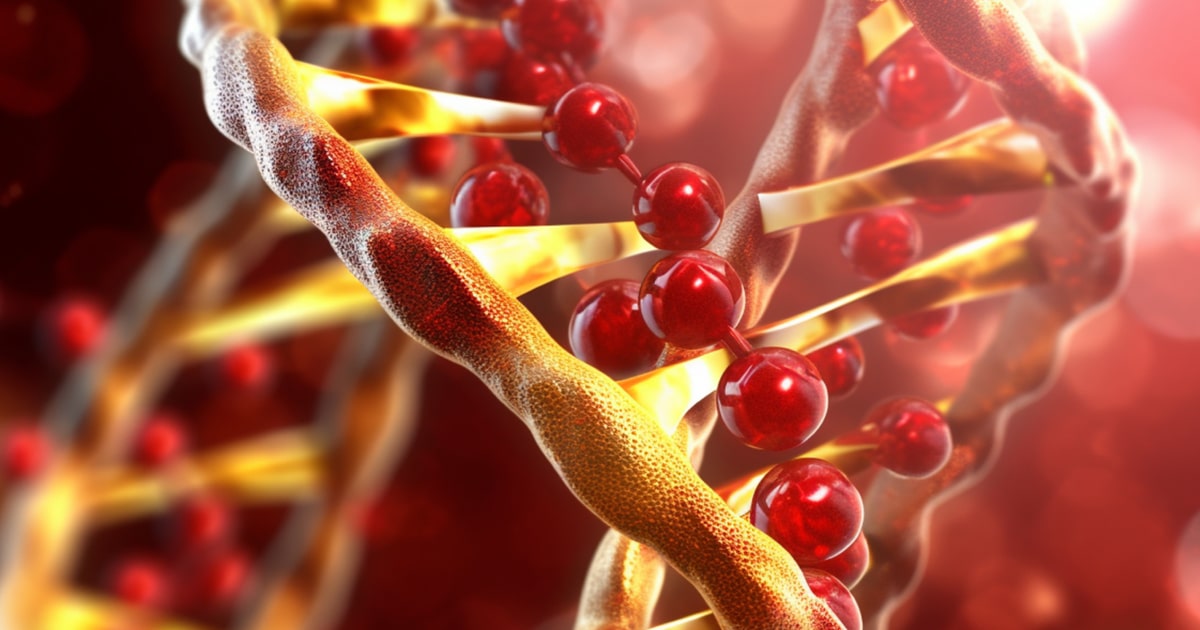
Expert Reviewed By: Dr. Brandon Colby MD
Metachromatic leukodystrophy (MLD) is a rare genetic disorder that affects the nervous system, causing a progressive decline in mental and physical abilities. One of the key factors in understanding and diagnosing MLD is the identification of a specific genetic variant, known as the arylsulfatase A pseudodeficiency allele. In this article, we will delve into the complexities of this genetic variant, its implications for MLD patients, and the importance of genetic testing in managing the disease.
Understanding Arylsulfatase A Pseudodeficiency
Arylsulfatase A (ARSA) is an enzyme that plays a crucial role in breaking down certain fatty substances in the body. In individuals with MLD, a deficiency in ARSA activity leads to the accumulation of these fatty substances in the nervous system, causing progressive damage and deterioration. The arylsulfatase A pseudodeficiency allele is a genetic variant that results in reduced ARSA activity but does not cause MLD. However, it is essential to identify this allele in patients suspected of having MLD to ensure accurate diagnosis and appropriate treatment.
A study on a 9-bp deletion in the arylsulfatase A pseudodeficiency allele found that this genetic variant is present in both MLD patients and individuals with nonprogressive neurological symptoms. This discovery highlights the importance of distinguishing between true MLD and pseudodeficiency to avoid misdiagnosis and unnecessary interventions.
Diagnosing Metachromatic Leukodystrophy
Diagnosing MLD can be challenging due to the variability in clinical presentation and the presence of the arylsulfatase A pseudodeficiency allele in some individuals. A combination of clinical evaluation, biochemical testing, and genetic testing is typically required to confirm a diagnosis of MLD.
An assay for rapid detection of the arylsulfatase A pseudodeficiency allele has been developed to facilitate diagnosis and genetic counseling for MLD. This assay allows for the identification of the pseudodeficiency allele in patients with reduced ARSA activity, helping to differentiate between true MLD and pseudodeficiency.
However, a report on mutations in the arylsulfatase A pseudodeficiency allele causing MLD highlights the need for caution in diagnosis. Some individuals with the pseudodeficiency allele may still develop MLD due to additional genetic mutations, emphasizing the importance of comprehensive genetic testing in the diagnostic process.
Genetic Testing for Arylsulfatase A Pseudodeficiency
Genetic testing plays a vital role in the diagnosis and management of MLD and arylsulfatase A pseudodeficiency. By identifying the presence of the pseudodeficiency allele and other genetic mutations, healthcare providers can make informed decisions about treatment and counseling for affected individuals and their families.
Diagnostic Purposes
As mentioned earlier, genetic testing is essential in differentiating between true MLD and arylsulfatase A pseudodeficiency. By identifying the specific genetic variants present in an individual with reduced ARSA activity, healthcare providers can determine whether the patient has MLD or a nonprogressive neurological condition.
Carrier Screening
Genetic testing can also be used to identify carriers of the arylsulfatase A pseudodeficiency allele in the general population. A study determining the allele and haplotype frequency in the Tunisian population found that the pseudodeficiency allele is present in approximately 5.9% of individuals. Identifying carriers of the allele can help to provide genetic counseling and inform reproductive decisions for couples at risk of having a child with MLD.
Guiding Treatment and Management
Finally, genetic testing can be instrumental in guiding the treatment and management of MLD. By understanding the specific genetic mutations present in an individual with the disease, healthcare providers can tailor treatment plans to address the underlying cause of the condition and monitor the patient's response to therapy.
In conclusion, genetic testing is a crucial tool in understanding, diagnosing, and managing arylsulfatase A pseudodeficiency and metachromatic leukodystrophy. By identifying the presence of the pseudodeficiency allele and other genetic mutations, healthcare providers can ensure accurate diagnosis, provide appropriate treatment, and offer informed genetic counseling for affected individuals and their families.
About The Expert Reviewer
Dr. Brandon Colby MD is a US physician specializing in the personalized prevention of disease through the use of genomic technologies. He’s an expert in genetic testing, genetic analysis, and precision medicine. Dr. Colby is also the Founder of and the author of Outsmart Your Genes.
Dr. Colby holds an MD from the Mount Sinai School of Medicine, an MBA from Stanford University’s Graduate School of Business, and a degree in Genetics with Honors from the University of Michigan. He is an Affiliate Specialist of the American College of Medical Genetics and Genomics (ACMG), an Associate of the American College of Preventive Medicine (ACPM), and a member of the National Society of Genetic Counselors (NSGC)